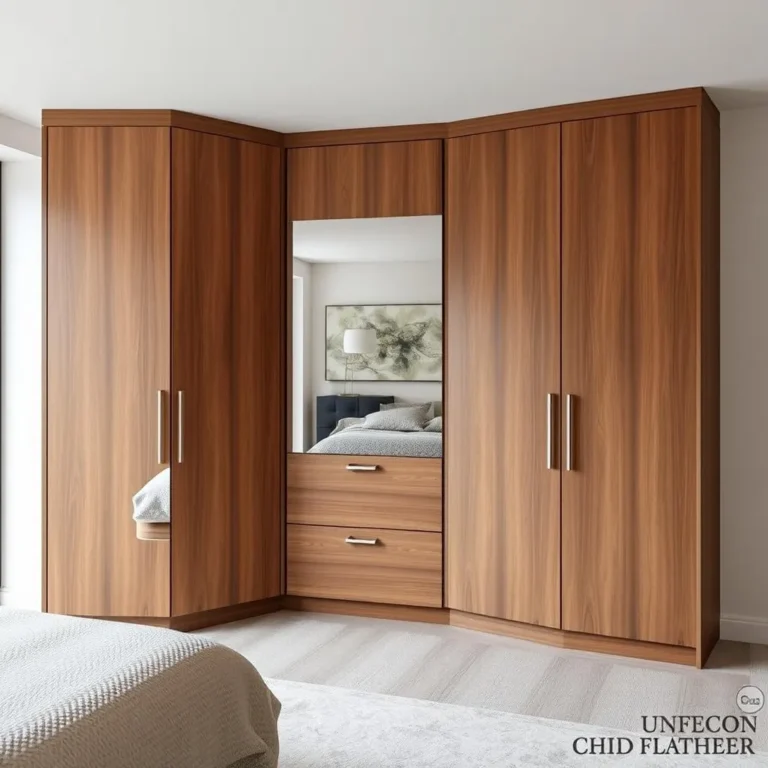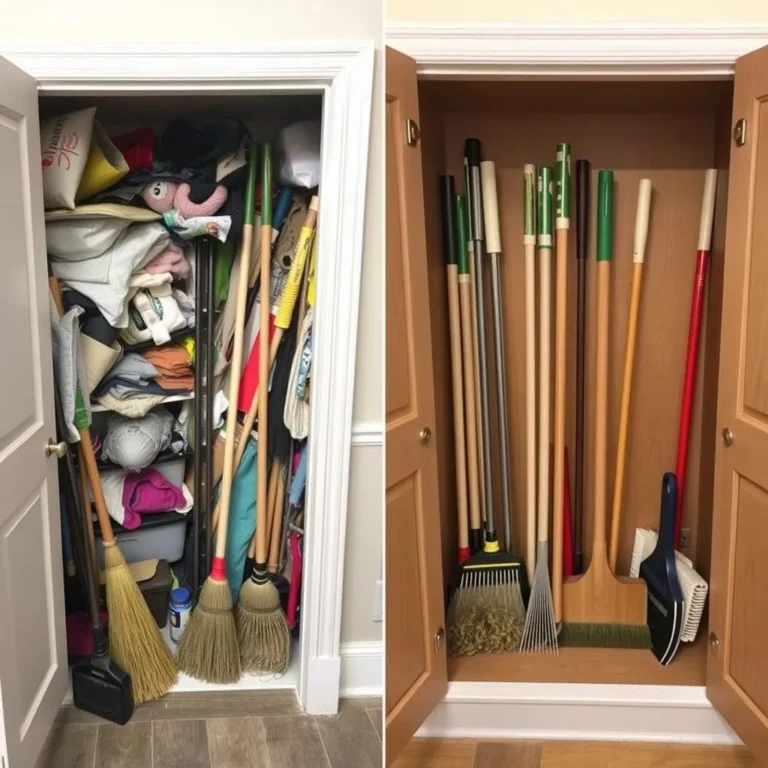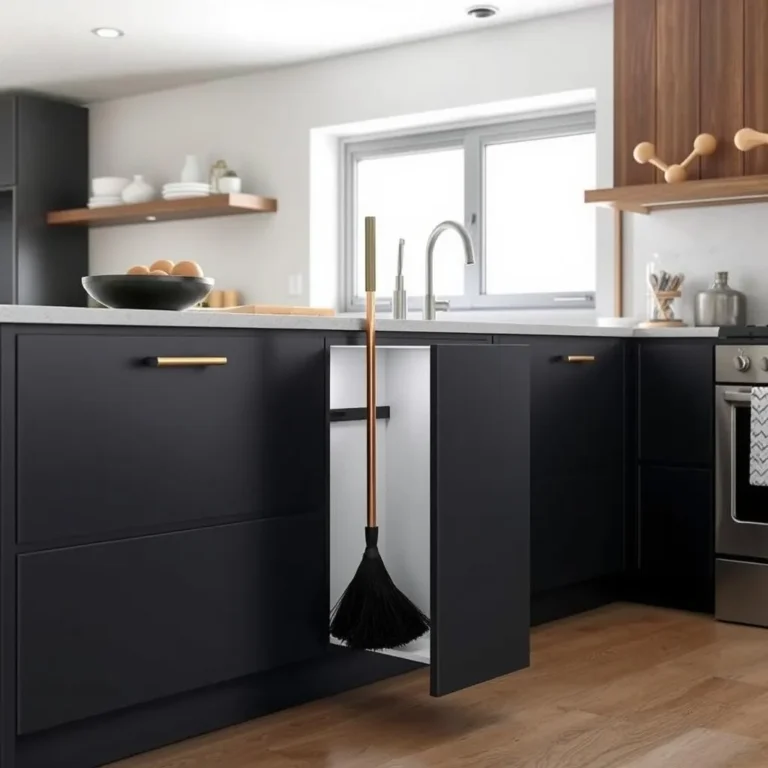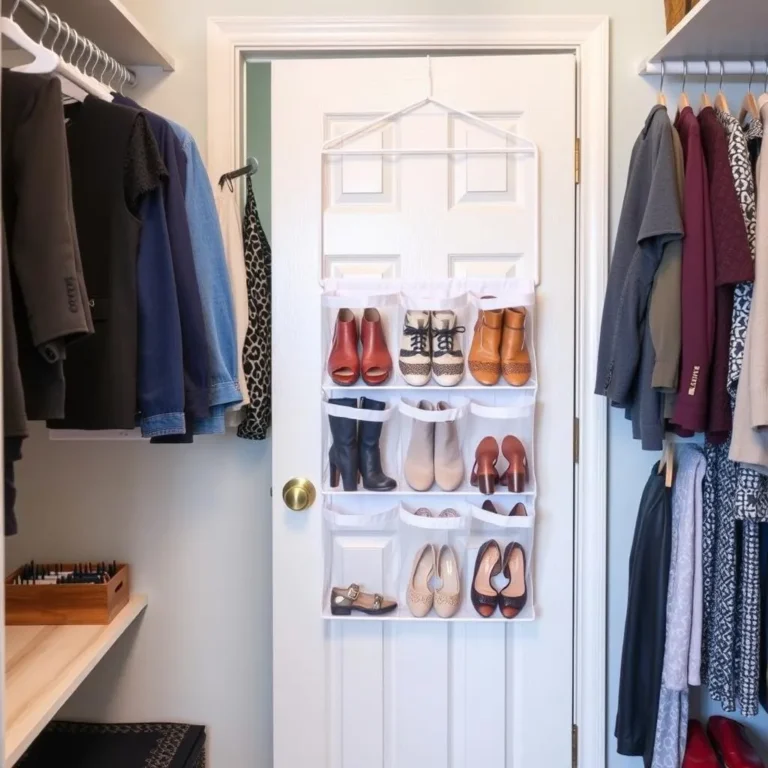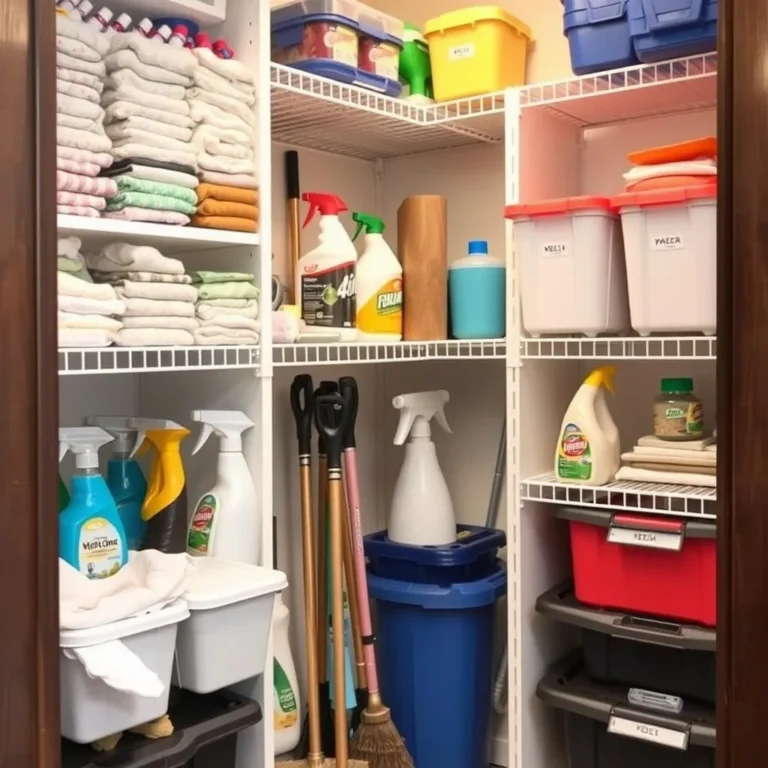Table of Contents
1. The Overwhelming Closet Conundrum
1.1 The Emotional Toll of a Messy Closet
1.2 Why Organization Matters: Beyond Aesthetics
2. Pre-Organization Prep Work: The Crucial First Step
2.1 Clearing the Decks: Emptying Your Closet Completely
2.2 Gathering Your Supplies: Tools for the Task
3. The Purge: Saying Goodbye to Unwanted Items
3.1 The One-Year Rule: A Simple Sorting Method
3.2 The “Does It Spark Joy?” Method: A More Sentimental Approach
3.3 Donation, Recycling, or Trash: Responsible Disposal
4. Categorizing and Grouping: Creating Order from Chaos
4.1 Similar Items Together: Grouping for Efficiency
4.2 Seasonal Sorting: Maximizing Space and Accessibility
5. Maximize Vertical Space: Utilizing Often-Overlooked Areas
5.1 Shelving Solutions: Utilizing Height Efficiently
5.2 Hanging Organizers: Smart Storage for Small Spaces
6. Folding Techniques for Neatness and Space Saving
6.1 The KonMari Method: Folding for Efficient Storage
6.2 Other Folding Techniques: Finding What Works for You
7. Shoe Storage Solutions: Keeping Kicks Organized
7.1 Shoe Racks and Organizers: Options for Every Space
7.2 Creative Shoe Storage Ideas: Thinking Outside the Box
8. Accessorizing Your Organization: Clever Additions
8.1 Labels and Bins: Maintaining Order Over Time
8.2 Drawer Dividers: Taming the Chaos Within
9. Maintaining Your Organized Closet: Tips for Long-Term Success
9.1 Regular Purges: Preventing Clutter Buildup
9.2 The “One In, One Out” Rule: Maintaining Balance
10. Closet Organization on a Budget: Affordable Solutions
11. Professional Closet Organizers: When to Seek Help
12. Different Closet Types and Their Organization Strategies
12.1 Walk-in Closets: Maximizing Ample Space
12.2 Reach-in Closets: Optimizing Limited Space
13. Closet Organization for Specific Needs
13.1 Organizing Kids’ Closets: Age-Appropriate Strategies
13.2 Organizing a Shared Closet: Collaboration is Key
14. Technology and Closet Organization: Apps and Tools
15. The Joy of an Organized Closet: Reap the Rewards
Organize Your Closet: A Step-by-Step Guide to a Tidy Sanctuary
1. The Overwhelming Closet Conundrum
Let’s be honest, closets can be terrifying. They’re often a black hole of forgotten items, overflowing shelves, and a general sense of chaos. But what if I told you transforming your closet from a disaster zone into a haven of organization is totally achievable? This guide will walk you through the process, step by step.
1.1 The Emotional Toll of a Messy Closet
A messy closet isn’t just an aesthetic issue; it can significantly impact your mood and mental well-being. That constant visual clutter can create stress and anxiety, making it hard to find what you need and leaving you feeling overwhelmed. Imagine the feeling of calm and control you’ll experience with a well-organized space!
1.2 Why Organization Matters: Beyond Aesthetics
Organizing your closet offers benefits beyond just a pleasing visual. It saves you valuable time searching for clothes, reduces stress, and helps you make more thoughtful decisions about your wardrobe. Think of it as an investment in your time, peace of mind, and overall well-being. 
2. Pre-Organization Prep Work: The Crucial First Step
Before diving into the nitty-gritty, some preparation is essential. This sets the stage for a smooth and efficient organization process.
2.1 Clearing the Decks: Emptying Your Closet Completely
This might seem daunting, but it’s the most important step. Empty your closet entirely, taking everything out onto the floor. This gives you a blank canvas and allows you to assess the full scope of what you’re working with. Trust me, it’s liberating!
2.2 Gathering Your Supplies: Tools for the Task
Gather your arsenal of organizational tools. This includes garbage bags for unwanted items, donation boxes, laundry baskets, measuring tape, and any organizational tools you plan to use (shelves, bins, hangers, etc.). Having everything ready beforehand keeps the process moving smoothly.
3. The Purge: Saying Goodbye to Unwanted Items
This is where the real work begins. It’s time to evaluate each item and decide what stays and what goes.
3.1 The One-Year Rule: A Simple Sorting Method
A great starting point is the “one-year rule.” If you haven’t worn or used an item in the past year, it’s a strong indicator that it’s time to let it go. Be honest with yourself – are you truly going to wear that outdated sweater again?
3.2 The “Does It Spark Joy?” Method: A More Sentimental Approach
The KonMari method suggests holding each item and asking yourself if it “sparks joy.” This emotional approach can be helpful for sentimental items, but remember, holding onto things that no longer serve you can be emotionally draining.
3.3 Donation, Recycling, or Trash: Responsible Disposal
Once you’ve purged unwanted items, dispose of them responsibly. Donate usable clothing and items to charity, recycle what you can, and properly dispose of anything that’s beyond repair. This is a sustainable and ethical way to manage your belongings.
4. Categorizing and Grouping: Creating Order from Chaos
With the purge complete, it’s time to organize what remains.
4.1 Similar Items Together: Grouping for Efficiency
Group similar items together. For example, all your pants in one section, shirts in another, and so on. This makes finding things much easier and creates a visual sense of order.
4.2 Seasonal Sorting: Maximizing Space and Accessibility
Store out-of-season clothing in bins or elsewhere to maximize space and make it easier to access what you need for the current season. This keeps your closet from feeling overcrowded.
5. Maximize Vertical Space: Utilizing Often-Overlooked Areas
Closets often have untapped vertical space. Let’s utilize it!
5.1 Shelving Solutions: Utilizing Height Efficiently
Install shelves to maximize vertical space. This creates more storage options for folded items, shoes, and accessories.
5.2 Hanging Organizers: Smart Storage for Small Spaces
Hanging organizers are perfect for smaller closets, creating extra space for shoes, sweaters, or accessories.
6. Folding Techniques for Neatness and Space Saving
Proper folding techniques are key to maximizing space and creating a neat and tidy closet.
6.1 The KonMari Method: Folding for Efficient Storage
The KonMari method uses a unique folding technique that allows clothes to stand upright in drawers, making it easy to see everything at a glance.
6.2 Other Folding Techniques: Finding What Works for You
Experiment with different folding techniques to find what works best for you and your clothing items. The goal is to create neat, compact stacks or rolls.
7. Shoe Storage Solutions: Keeping Kicks Organized
Shoes can easily take over a closet. Here’s how to reign them in.
7.1 Shoe Racks and Organizers: Options for Every Space
Utilize shoe racks or organizers to keep shoes off the floor and organized. There are numerous options available, from simple shelf racks to over-the-door organizers.
7.2 Creative Shoe Storage Ideas: Thinking Outside the Box
Get creative with your shoe storage! Use clear bins to store shoes on shelves, or repurpose other items like baskets or crates to store shoes creatively.
8. Accessorizing Your Organization: Clever Additions
These small details make all the difference.
8.1 Labels and Bins: Maintaining Order Over Time
Use labels to clearly identify the contents of bins and drawers. This makes it easy to find what you need and maintain order over time.
8.2 Drawer Dividers: Taming the Chaos Within
Drawer dividers keep folded items neat and prevent them from becoming jumbled. They’re particularly useful for drawers containing socks, underwear, or accessories.
9. Maintaining Your Organized Closet: Tips for Long-Term Success
An organized closet isn’t a one-time fix; it requires ongoing maintenance.
9.1 Regular Purges: Preventing Clutter Buildup
Schedule regular purges to prevent clutter from building up again. A quick once-a-month or seasonal review will help.
9.2 The “One In, One Out” Rule: Maintaining Balance
Adopt the “one in, one out” rule. For every new item you bring into your closet, remove an older one. This helps prevent future clutter.
10. Closet Organization on a Budget: Affordable Solutions
You don’t need to spend a fortune to achieve a well-organized closet. Utilize inexpensive storage solutions like repurposed containers, fabric bins, and over-the-door organizers.
11. Professional Closet Organizers: When to Seek Help
If you’re feeling overwhelmed or lack the time, consider hiring a professional closet organizer. They can provide expert guidance and help you create a highly efficient and personalized system.
12. Different Closet Types and Their Organization Strategies
The best organization strategy depends on your closet type.
12.1 Walk-in Closets: Maximizing Ample Space
Walk-in closets offer ample space for creative organization. Utilize shelving units, drawers, hanging rods, and other storage solutions to maximize the space effectively.
12.2 Reach-in Closets: Optimizing Limited Space
Reach-in closets require more efficient organization strategies. Focus on maximizing vertical space, using slimline hangers, and utilizing door organizers to make the most of limited space.
13. Closet Organization for Specific Needs
Consider the unique needs of your household when organizing.
13.1 Organizing Kids’ Closets: Age-Appropriate Strategies
Organize kids’ closets with age-appropriate strategies. Use low shelves, clear bins, and colorful labels to make it easy for children to access and maintain their clothes.
13.2 Organizing a Shared Closet: Collaboration is Key
For shared closets, open communication and collaboration are essential. Establish clear zones for each person and agree on organizational strategies to ensure fairness and maintain order.
14. Technology and Closet Organization: Apps and Tools
There are various apps and digital tools available to help you organize your closet, from inventory management to style planning. Explore these resources to enhance your organization.
15. The Joy of an Organized Closet: Reap the Rewards
An organized closet is more than just a tidy space; it’s a reflection of your well-being. The sense of calm, control, and efficiency it brings will enhance your daily routine and improve your overall quality of life. So, take the leap, tackle that closet, and enjoy the rewards of a truly organized space!
Conclusion:
Organizing your closet is a transformative process, offering significant benefits beyond just a cleaner space. It boosts your mood, saves time, and creates a sense of calm. By following the steps in this guide, you can transform your closet from a source of stress to a haven of peace and efficiency. Remember, maintaining this order is crucial, so regular purges and conscious decisions about your wardrobe will be essential for long-term success.
FAQs:
-
How often should I purge my closet? Ideally, aim for a seasonal purge (twice a year) or at least once every six months. This prevents clutter from accumulating.
-
What are the best tools for closet organization? The best tools depend on your closet’s size and your needs, but consider shelves, bins, hanging organizers, and drawer dividers.
-
How do I deal with sentimental items I don’t use? Take photos of sentimental items to preserve the memories without holding onto the physical object.
-
What if I don’t have much space in my closet? Maximize vertical space with shelves, hanging organizers, and utilize vacuum storage bags for seasonal items.
-
Can I organize my closet without spending a lot of money? Yes, you can achieve a well-organized closet with inexpensive solutions. Repurpose containers you already have, use fabric bins, and consider DIY storage solutions.

